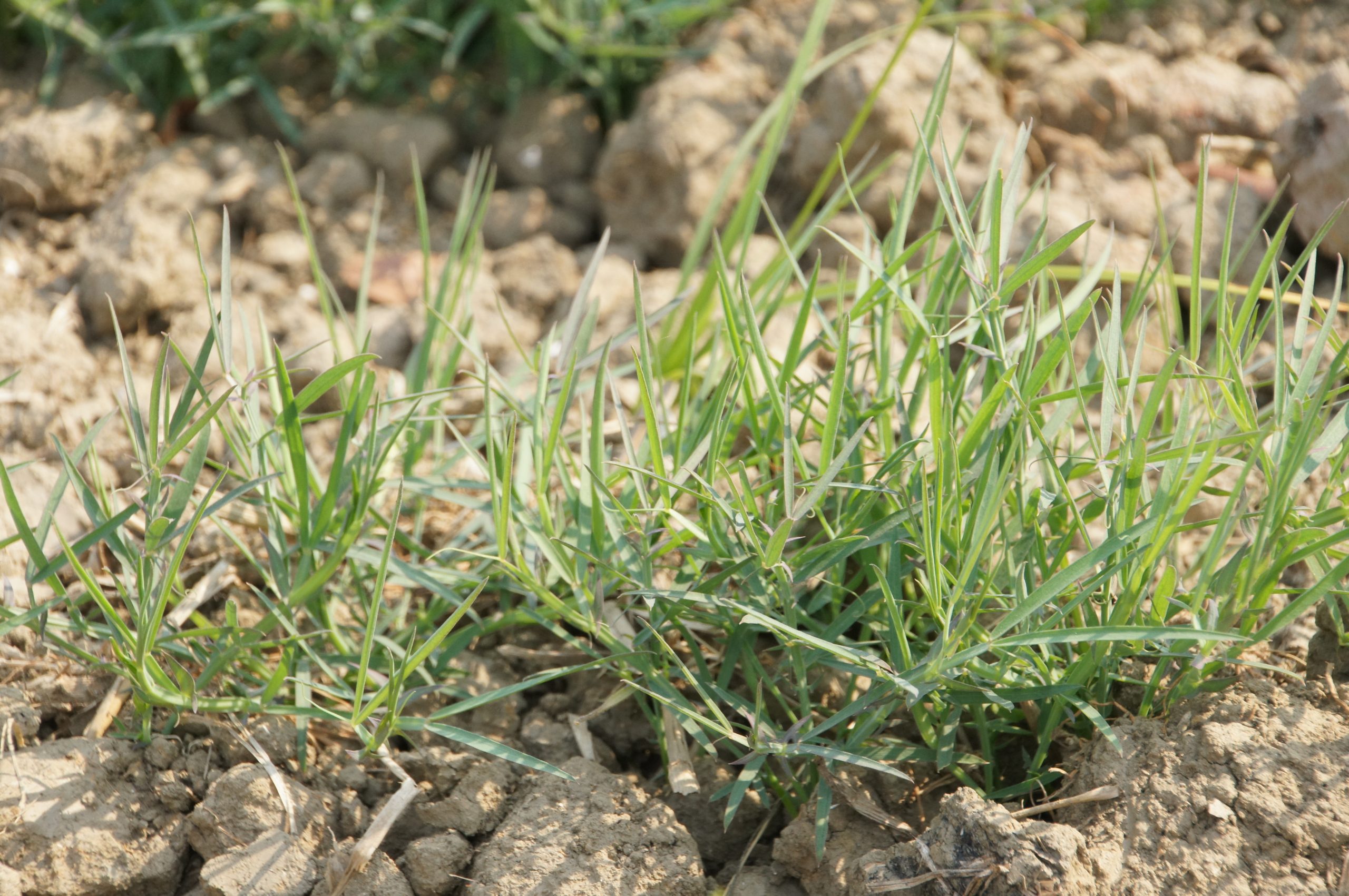
September 8, 2021, by Lexi Earl
Evolving grass pea from ‘orphan’ crop to staple food
This post is written by Drs Peter Emmrich and Levi Yant.
Malnutrition from protein deficiency is a widespread problem and concern. Populations in the developing world are at particular risk due to the higher costs of animal proteins when compared to plant proteins. These populations therefore tend to rely on protein-rich plant-based foods like beans, peas and lentils that are accepted by local populations.

The flowers and pod of a grass pea
Beyond the need for alternative proteins for population health, is the imperative to find different sources of protein for the health of the planet. Our current reliance on animal-based proteins is contributing to climate change, and one way to combat this damage is to encourage the consumption of alternative proteins – legumes are good plant-based sources of protein. Combined with this necessity are the everyday realities of climate change – unpredictable weather patterns, more frequent and severe droughts and floods, and increases in temperatures. Staple crops need to be resilient to these changes in order to maintain their yields. Many farmers in countries of the Global South also do not have resources for irrigation or fertilisers, farmers rely on rain to water their crops and cannot afford to buy other inputs to help their crops produce more. This means that crops that can withstand extreme weather, and which produce high yields without additional inputs are becoming more and more important.
Grass pea is one such crop. It is a hardy legume that has been grown for over 8000 years. It can tolerate both drought and excess rain, and survives flooding. Grass pea grows in ‘difficult’ soils – from heavy clay soils to those of poor quality – and fixes nitrogen into those soils. Farmers often grow grass pea to aid the main economic crop, planting either before the main crop (like rice) or alternating with the main crop. It is known as an insurance crop, as it often continues to grow even when other crops have failed. The seeds of grass pea are high in protein, and are therefore an important source of this essential nutrient.

A grass pea field in Ethiopia
But grass pea also contains a toxin – β-ODAP – that can cause an irreversible, neurodegenerative disorder if consumed in large quantities. While it is safe to consume grass pea as part of a normal diet, when consumed as more than 40% of calorie intake over several months (for example, during times of adversity when other crops have failed), people are at risk of developing this condition. Research into the potential of grass pea has so far been limited. As it is only grown in limited areas, and is considered a minor species, grass pea has been overlooked by agricultural researchers. However, many crops that are not considered staple crops at the global level are important staples at either regional or national levels.

Young grass peas

Plants for a mutant screening
What can plant scientists then do to improve grass pea that will make it less dangerous to eat and more acceptable to consume? One way is to examine the grass pea genome in detail, and to look for opportunities to isolate the gene that produces the toxin. We have sequenced the grass pea genome in order to do just this. Understanding a species’ genome is crucial to many modern breeding approaches, both GM and conventional. The genome is helping breeders identify genes responsible for key traits and track them through their experiments, allowing them to make use of the natural diversity of grass pea and develop new varieties faster. Scientists can now also edit the genes of the grass pea to remove the toxin from the seeds. This helps the researchers understand how the plant produces this toxin, but may also be used to develop new grass pea varieties for smallholder farmers. In fact, the Kenyan government has recently declared that gene edited lines that do not carry foreign genetic material will no longer be regulated as GMOs, so these new lines, free of the toxin, could start to improve grass pea cultivation in East Africa very soon.

Dr Peter Emmrich with Ethiopian grass pea seedlings

I would be interested if I get your full document for furthur reading